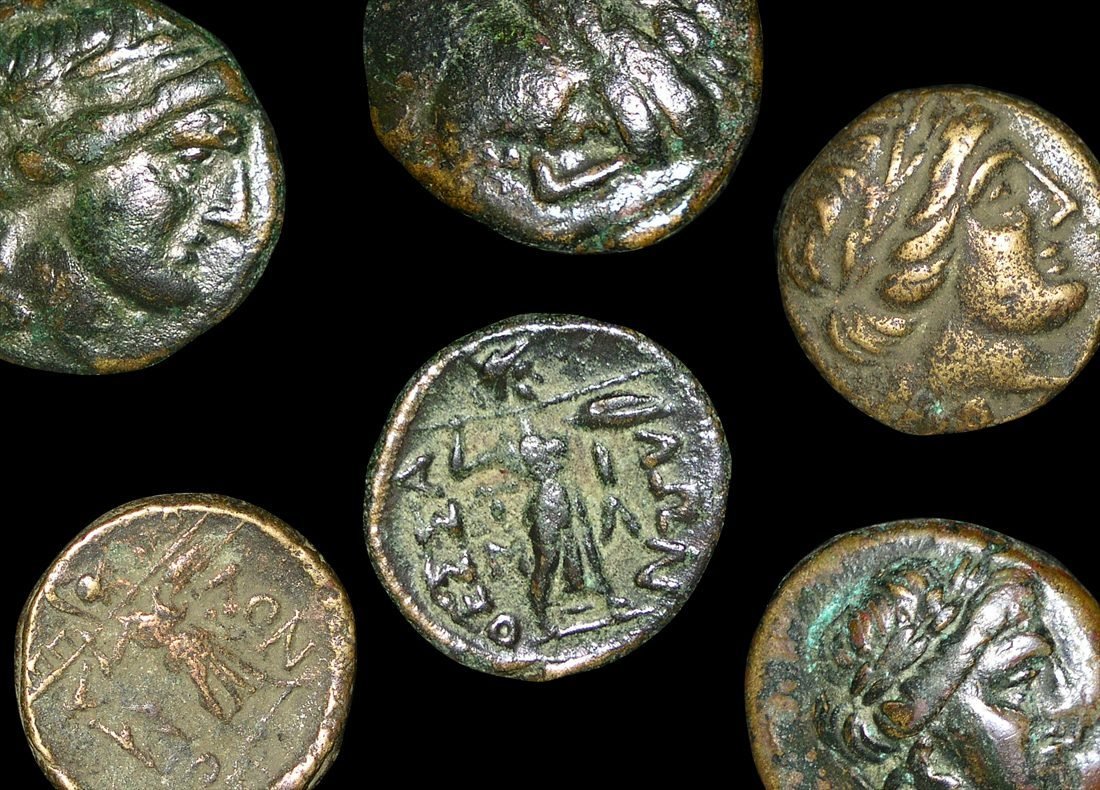 Image 1 of 2
Image 1 of 2

 Image 2 of 2
Image 2 of 2



Cyzicus Lion and Boar Hemiobol (2,475 years ago)
This tiny silver coin was produced in the ancient Greek city of Cyzicus in Mysia (northwestern Turkey). It exemplifies early Greek coinage when city-states were developing their distinctive monetary systems and artistic styles.
Coin Description:
Front side: Forepart (front half) of a wild boar facing left, a symbol associated with the city
Back side: Head of a roaring lion facing left, set within a characteristic incuse square (sunken square area)
Technical Details:
Material composition: Silver
Denomination: Hemiobol (half an obol, a small-value coin in the Greek monetary system)
Reference numbers: BM-118, SNG von Aulock-7331
Weight: 0.38 grams
Date of minting: 480-450 BCE
Historical Significance:
This coin was struck in Cyzicus (near modern Erdek, Turkey) during the early Classical period when Greek city-states were emerging from Persian domination following the Persian Wars. The hemiobol was a small denomination used for minor daily purchases, representing about 1/12 of a drachm (a day's wage for common labor). These small coins feature the distinctive "incuse square" punch mark on the reverse, a technical feature characteristic of early Greek coinage before more advanced minting techniques developed.
This tiny silver coin was produced in the ancient Greek city of Cyzicus in Mysia (northwestern Turkey). It exemplifies early Greek coinage when city-states were developing their distinctive monetary systems and artistic styles.
Coin Description:
Front side: Forepart (front half) of a wild boar facing left, a symbol associated with the city
Back side: Head of a roaring lion facing left, set within a characteristic incuse square (sunken square area)
Technical Details:
Material composition: Silver
Denomination: Hemiobol (half an obol, a small-value coin in the Greek monetary system)
Reference numbers: BM-118, SNG von Aulock-7331
Weight: 0.38 grams
Date of minting: 480-450 BCE
Historical Significance:
This coin was struck in Cyzicus (near modern Erdek, Turkey) during the early Classical period when Greek city-states were emerging from Persian domination following the Persian Wars. The hemiobol was a small denomination used for minor daily purchases, representing about 1/12 of a drachm (a day's wage for common labor). These small coins feature the distinctive "incuse square" punch mark on the reverse, a technical feature characteristic of early Greek coinage before more advanced minting techniques developed.
This tiny silver coin was produced in the ancient Greek city of Cyzicus in Mysia (northwestern Turkey). It exemplifies early Greek coinage when city-states were developing their distinctive monetary systems and artistic styles.
Coin Description:
Front side: Forepart (front half) of a wild boar facing left, a symbol associated with the city
Back side: Head of a roaring lion facing left, set within a characteristic incuse square (sunken square area)
Technical Details:
Material composition: Silver
Denomination: Hemiobol (half an obol, a small-value coin in the Greek monetary system)
Reference numbers: BM-118, SNG von Aulock-7331
Weight: 0.38 grams
Date of minting: 480-450 BCE
Historical Significance:
This coin was struck in Cyzicus (near modern Erdek, Turkey) during the early Classical period when Greek city-states were emerging from Persian domination following the Persian Wars. The hemiobol was a small denomination used for minor daily purchases, representing about 1/12 of a drachm (a day's wage for common labor). These small coins feature the distinctive "incuse square" punch mark on the reverse, a technical feature characteristic of early Greek coinage before more advanced minting techniques developed.
Cyzicus (/ˈsɪzɪkəs/ SIZ-ik-əs; Ancient Greek: Κύζικος, romanized: Kúzikos; Ottoman Turkish: آیدینجق, romanized: Aydıncıḳ) was an ancient Greek town in Mysia in Anatolia in the current Balıkesir Province of Turkey. It was located on the shoreward side of the present Kapıdağ Peninsula (the classical Arctonnesus), a tombolo which is said to have originally been an island in the Sea of Marmara only to be connected to the mainland in historic times either by artificial means or an earthquake.
The site of Cyzicus, located on the Erdek and Bandırma roads, is protected by Turkey's Ministry of Culture.
You Might Also Like











